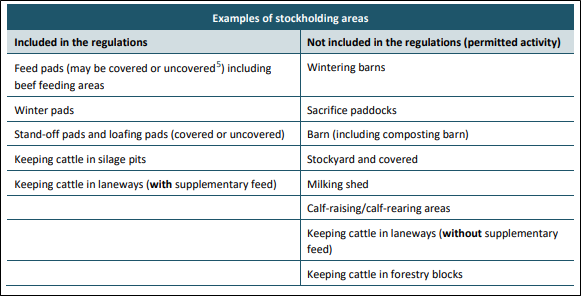Under the new Essential Freshwater package, feedlots and other stockholding areas must be an appropriate distance from waterbodies, meet minimum permeability standards, and provide for effluent management.
Here you will find information on the types of stock feeding and holding areas and which are permitted, or require consent under the Essential Freshwater package. This information is also summarised in the flowchart diagram on the right.
The National Environmental Standards for Freshwater (NES-F) defines a feedlot as a stockholding area where cattle:
If you meet the following conditions, your feedlot will not need resource consent to meet the Essential Freshwater rules:
You may require resource consent for your feedlot if you do not meet the above conditions.
A stockholding area is an area for holding cattle at a density that means pasture or other ground covers can’t be maintained, for example, feed pads, winter pads, stand-off pads, and loafing pads.

Source: MfE Stock Holding Definition and Guidance 2022
Using land for stockholding is allowed and doesn’t require resource consent if at least 90% of the cattle are under 4 months old or weigh less than 120kg.
Land can also be used for holding larger and older cattle in a stockholding area (other than a feedlot) without consent if you meet all the following conditions.
You can also use land for holding larger and older cattle in a stockholding area (other than a feedlot) without resource consent if you have a certified Freshwater Farm Plan that applies to holding cattle in the stockholding area, and a certifier has stated that the adverse effects allowed for by the plan are not greater than those in the above conditions. However, it is anticipated that Freshwater Farm Plans will not be rolled out in Tasman until early 2025, so in the meantime, if you can’t meet the Permitted Activity rules, you will need resource consent for your stockholding area.
For more information please read the MfE Stockholding definition and guidance
If you have any questions about the new regulations around feedlots and other stockholding areas, or how they relate to your farm please make direct contact with our Catchment Facilitator’s via ruralinfo@tasman.govt.nz